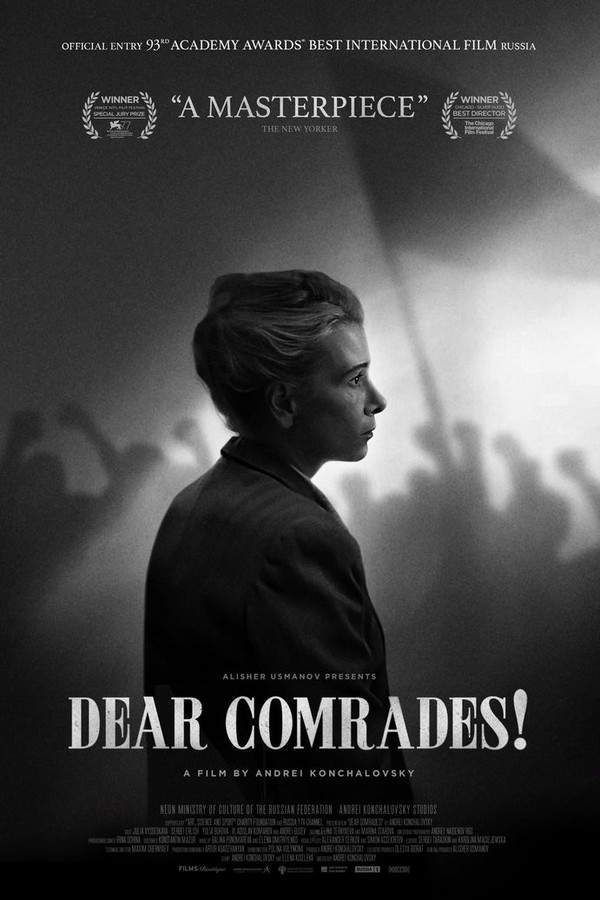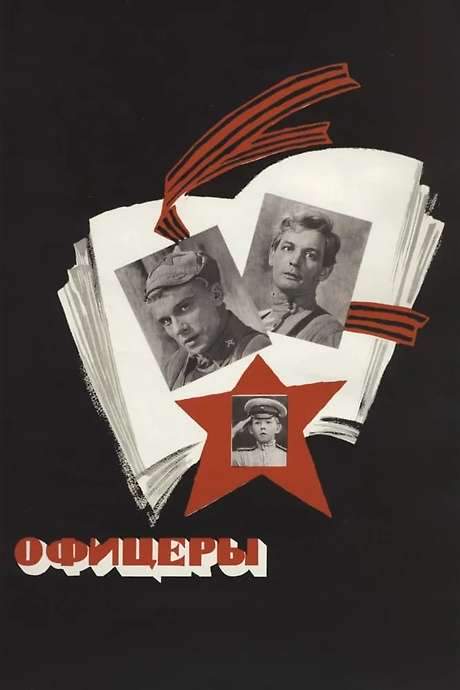
Two Comrades Were Serving
Year: 1968
Runtime: 99 mins
Language: Russian
Director: Yevgeni Karelov
During the final days of the Russian Civil War, the Red Army prepares a decisive attack on the Crimea, the White Guard’s last stronghold. The film follows two unlikely Red Army comrades, Nekrasov and Karyakin, as they fight together, while also portraying White Guard officer Brusentsov, a patriot who watches his cause crumble.
Warning: spoilers below!
Haven’t seen Two Comrades Were Serving yet? This summary contains major spoilers. Bookmark the page, watch the movie, and come back for the full breakdown. If you're ready, scroll on and relive the story!
Two Comrades Were Serving (1968) – Full Plot Summary & Ending Explained
Read the complete plot breakdown of Two Comrades Were Serving (1968), including all key story events, major twists, and the ending explained in detail. Discover what really happened—and what it all means.
In 1920, two Red Army soldiers, Oleg Yankovskiy as Andrei Nekrasov and Rolan Bykov as Ivan Karyakin, are sent on a reconnaissance mission to photograph White Army fortifications as their unit advances toward Crimea’s Perekop. The film unfolds through the lens of their unlikely friendship, tracing how two men with starkly different temperaments—Nekrasov, intelligent and battle-weary, and Karyakin, earnest, energetic, and a touch naïve—gradually draw closer as they face the pressures of war and fear. Their mission is ambitious and precarious, and soon their plane stalls, compelling a rough landing in hostile terrain.
Captured by Makhnovists after the crash, the pair stage a tense escape and find themselves back with a different Red Army unit. Yet misfortune follows them: they are mistaken for White Army spies, and a firing squad is prepared. Just when the execution seems inevitable, their colonel arrives in time to halt the shots and insist that their footage be shown. The moment becomes a crucible for trust and misunderstanding: Karyakin openly accuses Nekrasov of betrayal, while Nekrasov, with calm tact, reconstructs events from memory and reveals a surprisingly accurate map of the fortifications that stuns their commander. The aftermath tests their bond; Karyakin’s impulse to condemn gives way to a cautious, uneasy reconciliation, but the rift lingers as they later cross paths again during the Perekop assault. By the time the Red Army pushes forward, Karyakin has risen to command, and the two men choose to leave their earlier quarrel behind, fighting side by side with a newfound understanding.
Parallel to this, a second, darker arc unfolds around Vladimir Vysotsky as [Aleksandr Brusentsov], a cynical White Army officer who finds himself at odds with his own side after an accidental killing of a comrade and a complicated romance with a young woman named Alexandra. Brusentsov’s bitterness deepens as he proposes an action that might have altered the Crimea landing, but his superiors discount his warnings, leaving him to navigate a doomed retreat. The conflict intensifies when, from afar, Brusentsov fires on Nekrasov, a mortal strike that stands in stark contrast to Nekrasov’s earlier restraint when he stayed Karyakin’s hand from shooting Brusentsov. The moral geography of loyalty and vengeance becomes increasingly murky as the two stories converge.
Nekrasov’s determined instinct to preserve evidence of what happened culminates in a desperate return of his camera and film to headquarters, a gesture that matters as much for history as for memory. In a quiet, sorrowful moment, Karyakin hums his fellow soldier’s favorite tune, a refrain that lingers in the air as the weight of what’s happened settles in. The film uses this motif to underscore how memory and music braid through the harsh logic of war, binding men to what they’ve done and what they’ve left behind.
As the White Army evacuates Crimea, Brusentsov secures a hastily performed marriage to Alexandra, a final attempt to find some form of sanctuary amid the collapse of his world. He even tries to bring his cherished horse with him onto the departing ship, a small detail that feels both absurd and heartbreakingly human. When the ship sails away, the horse tragically continues to swim after it, and Brusentsov shoots himself, choosing an end that reflects the futility and despair that have shadowed his choices. The movie closes with a stark, almost documentary-like montage: the life of the Red Army, as seen through Nekrasov’s camera, moving forward even as the memories of partnership, rivalry, and lost comrades linger in the minds of those who survived.
In a larger sense, the film explores how two families of soldiers—one forged in mutual respect and reluctant camaraderie, the other scarred by loss and disillusion—navigate the brutal, often morally ambiguous choices that war imposes. It is a study of memory as a map, of art as a witness, and of love and loyalty contending with the relentless pull of history. The two strands of the narrative illuminate each other, turning a wartime mission into a meditation on friendship, responsibility, and the human cost of conflict.
Last Updated: October 09, 2025 at 11:26
Unlock the Full Story of Two Comrades Were Serving
Don't stop at just watching — explore Two Comrades Were Serving in full detail. From the complete plot summary and scene-by-scene timeline to character breakdowns, thematic analysis, and a deep dive into the ending — every page helps you truly understand what Two Comrades Were Serving is all about. Plus, discover what's next after the movie.
Two Comrades Were Serving Timeline
Track the full timeline of Two Comrades Were Serving with every major event arranged chronologically. Perfect for decoding non-linear storytelling, flashbacks, or parallel narratives with a clear scene-by-scene breakdown.

Similar Movies to Two Comrades Were Serving
Discover movies like Two Comrades Were Serving that share similar genres, themes, and storytelling elements. Whether you’re drawn to the atmosphere, character arcs, or plot structure, these curated recommendations will help you explore more films you’ll love.
Explore More About Movie Two Comrades Were Serving
Two Comrades Were Serving (1968) Scene-by-Scene Movie Timeline
Two Comrades Were Serving (1968) Movie Characters, Themes & Settings
Two Comrades Were Serving (1968) Spoiler-Free Summary & Key Flow
Movies Like Two Comrades Were Serving – Similar Titles You’ll Enjoy
Dear Comrades! (2020) Complete Plot Breakdown
A Russian Youth (2020) Story Summary & Characters
Winter of The Braves (2018) Plot Summary & Ending Explained
Comrade Abram (1919) Film Overview & Timeline
Comrades in Arms (1991) Detailed Story Recap
At War as at War (1969) Complete Plot Breakdown
The Red and the White (1967) Story Summary & Characters
Men in Soldier’s Overcoats (1968) Film Overview & Timeline
Two Soldiers (1943) Full Summary & Key Details
Three Comrades (1938) Movie Recap & Themes
The Alive and the Dead (1963) Complete Plot Breakdown
The History of the Civil War (1921) Movie Recap & Themes
The Communist (1958) Story Summary & Characters
Soldiers (1956) Movie Recap & Themes
Officers (1971) Plot Summary & Ending Explained

















